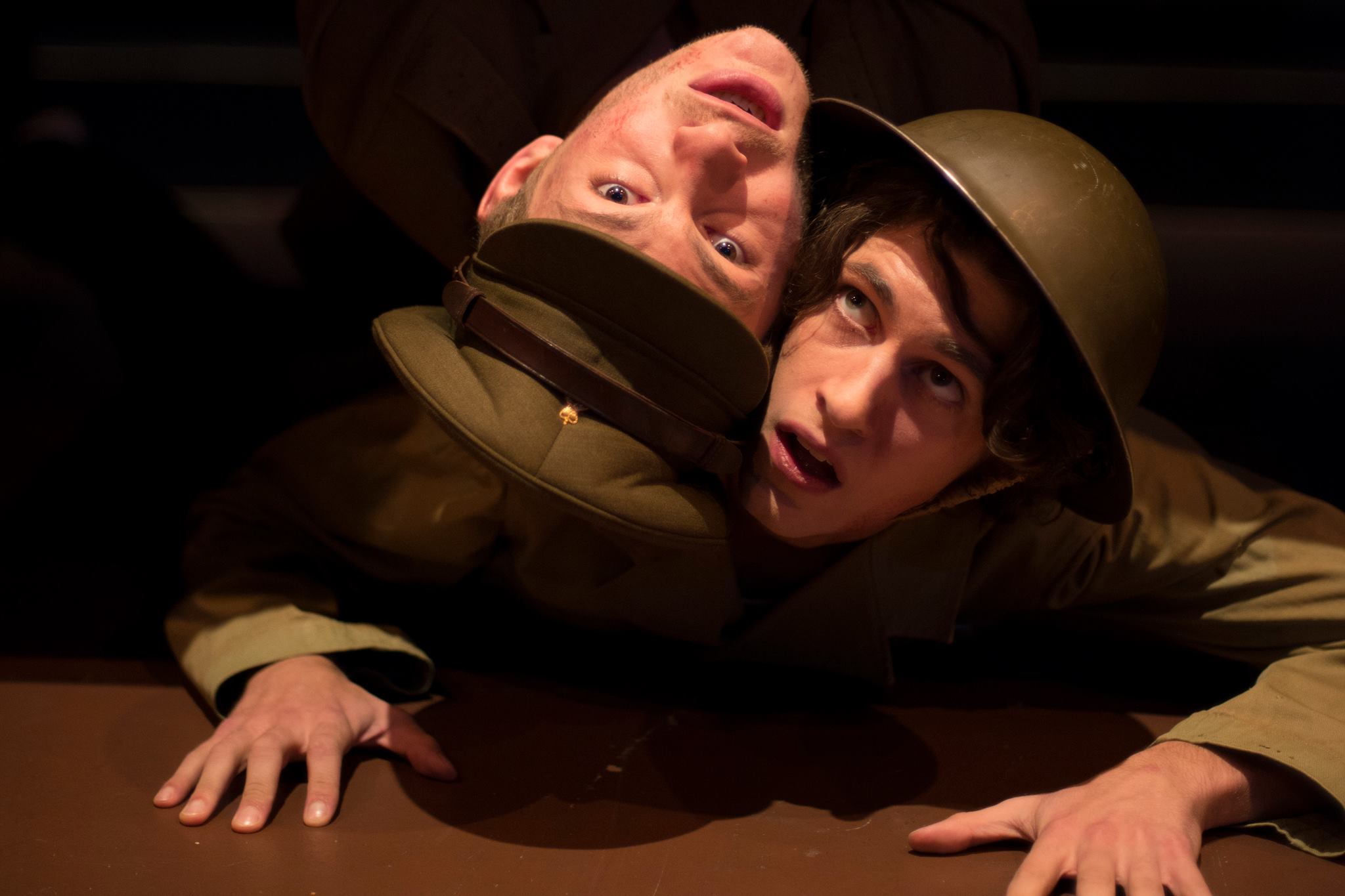By Ashley Mussbacher (The Cascade) – Email
Print Edition: October 22, 2014

UFV Theatre Department opened the doors to its first production of Birdsong on October 17 with a performance that held nothing back.
Based on the award-winning novel by Sebastian Faulks, Birdsong tells the story of a soldier in love. Lieutenant Stephen Wraysford is injured while fighting in the Great War and falls into his memories of his time with the beautiful Isabella. The performance portrays love in all its flawed glory, from wanting and longing to gritty and animalistic physicality.
Director Raina von Waldenburg blends the mechanics of a contemporary and periodic piece, utilizing everything on the stage. Actors played multiple characters, which made getting into the story difficult but nonetheless worthwhile. Once it’s clear there is no single pair of actors we should be focusing on, the singular romance story takes a backseat to broader picture: love and war, intimately interlaced.
Having 16 actors play 28 characters allows for flexibility in personal touches on each character, how they wanted to portray him or her. Instead of the actor imprinting themselves on the character, the characters’ different attributes were perceived depending on who was playing them at the moment.
The sense of unity was clear from the beginning, as even the warm-up was on stage. It achieved an atmosphere that was almost hypnotizing. The cast stood in a circle with two actors in the centre, and repeated anything they did from sounds to actions; the result was like a beating drum, or a heartbeat. The cast portrayed that sense of unity, carrying out their lines and following the stage direction, until the play began. The interjections of stage manager Cheyenne Douglas-Ruttan’s voice cutting through the scenes and introducing characters, deaths, and settings, felt like a loose thread needing to be snipped.
In The Cascade’s preview of Birdsong, von Waldenburg explains the breaking of the fourth wall in this performance. Everything is visible to the audience: the warm-up, the stage directions, cues, and even costume changing. The stage directions were meant to feel like military commands, but until that was made explicit, they simply helped order the scene and ground the audience in what and where.
The props were sparse, and often the audience had to imagine the scene: the battleground, the trimming of roses, the tunnel, the weapons; only the actors, audio, and lighting gave any hint to what was going on. It forced the audience into the play, to imagine being there and being involved, and that made the experience poetic — lingering on moments that disappear too soon like muddled memories of specific instances in time when everything feels messy and hasty, but too beautiful to let go.
As von Waldenburg writes in the director’s note, “Our story is about what it means to be together in this brief, precious, and expendable thing called life.”
Performances run October 18, 23, 24, 25 at 7:30 p.m., with matinees on October 19 and 26 at 2 p.m., and October 21 at 12 p.m.


